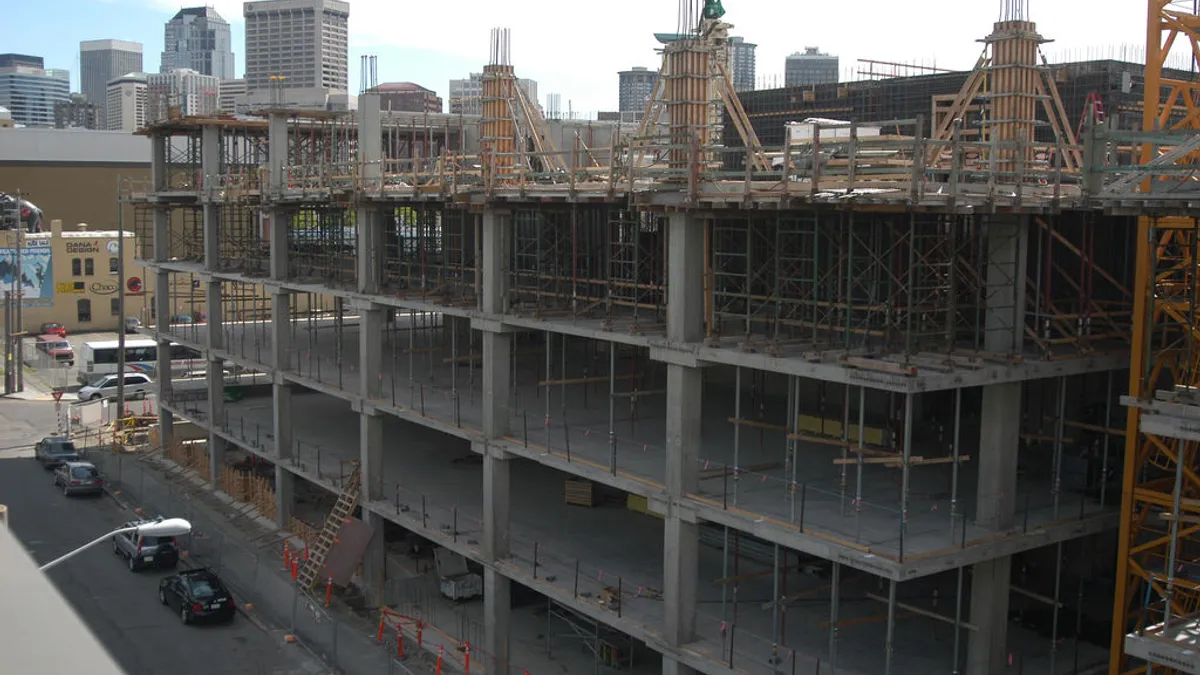Dive Brief:
- According to the National Association of Realtors quarterly commercial real estate forecast, sustained national job growth and improving credit conditions will aid in the expansion of commercial real estate activity into 2016, but property prices will most likely cool.
- Over the next year, the NAR predicts vacancy rates for office and industrial space will decline, to 14.8% and 9.7% respectively, driven by job creation. Retail space availability is expected to drop to 11.3%. Because of new multifamily projects planned for several markets, multifamily vacancies are expected to increase to 7.3%.
- The latest NAR Commercial Real Estate Market Survey, which measures quarterly activity, found that the shortage of available commercial property inventory is a concern and is pushing prices upward. During the third quarter, commercial sales volume rose 7.2% year over year, and prices increased 3.8%.
Dive Insight:
"Temporary turbulence in the financial markets, a stronger U.S. dollar hurting exports and economic weakness overseas chipped away at third quarter growth and led to some deceleration in the pace of commercial investments," NAR Chief Economist Lawrence Yun said. "The good news is that these deterrents are slowly residing, which should ultimately reawaken the growing appetite for commercial space heading into next year."
Yun also predicted that increases in lending and investment activity will be driven by steady job growth and slightly easier access to credit. The loosening of credit requirements, he said, is an especially important development for those involved with deals of $1 million or less and those with clients who rely on financing from local community banks and credit unions. Commercial Realtors, according to Yun, are still reporting tight lending conditions, but an increasing number have said credit is becoming a little easier to obtain.
This NAR report coincides with a National Association of Home Builders' acquisition, development and construction (AD&C) survey released this week that found more than 30% of developer and builder respondents believed credit requirements had eased in the third quarter of 2015.
Construction lending in 2015 has increased with caution, and some lenders are requiring more equity from applicants, limiting project size and negotiating terms to reduce the number of defaults. Tighter restrictions have forced some developers to seek alternate funding from private investors and non-bank lenders.












